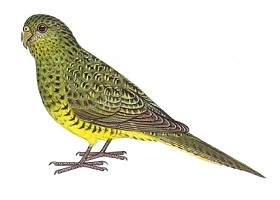Facts About Night parrot
The night parrot, a small and elusive bird native to Australia, is enveloped in mystery and intrigue. For much of the 20th century, it was presumed extinct, with no confirmed sightings between 1912 and 1979. Even today, spotting one is extraordinarily rare. Experts estimate that only between 50 and 249 adult night parrots survive.
The first definitive proof of the night parrot's existence came in 2013 when wildlife photographer John Young captured photos and videos of a live night parrot after years of dedicated searching. However, his findings were later questioned due to accusations of using fake feathers and eggs, casting doubt on his work within the scientific community.
The night parrot was first described by John Gould in 1861. Initially classified in its own genus, it was later placed under Pezoporus and is closely related to the ground parrot. These birds are predominantly yellowish-green with dark mottling and typically inhabit spinifex grass and other arid terrains. They feed on grass seeds and herbs.
Regrettably, the night parrot is considered endangered, with its population believed to be declining. Conservationists have been diligently working to locate and study these birds. Since 2005, there have been several sightings across Australia, and some live night parrots have even been tagged and tracked to support research and conservation initiatives.
Key areas for night parrot conservation include the Diamantina and Astrebla Grasslands in Queensland, as well as the Fortescue Marshes in the Pilbara region. The bird's presence in mining areas has raised concerns, prompting the development of management plans to protect its habitat.
